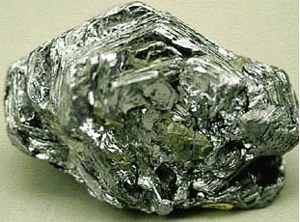 Recently, the University of California, Riverside provided some materials that shocked me, to say the least. According to that research, scientists from all around the world have reconstructed changes in Earth’s ancient ocean chemistry during a broad sweep of geological time, from about 2.5 to 0.5 billion years ago. What they found was that the lack of oxygen and molybdenum (a heavy metal) in the ancient deep water could have delayed the evolution of life on Earth for about two billion years.
Recently, the University of California, Riverside provided some materials that shocked me, to say the least. According to that research, scientists from all around the world have reconstructed changes in Earth’s ancient ocean chemistry during a broad sweep of geological time, from about 2.5 to 0.5 billion years ago. What they found was that the lack of oxygen and molybdenum (a heavy metal) in the ancient deep water could have delayed the evolution of life on Earth for about two billion years.
Researchers reached this conclusion by studying black shales, a kind of sedimentary rock very rich in organic matter, which is usually found in deep waters. They tracked molybdenum in black shales, as it is a key micronutrient for life and serves as a proxy for oceanic and atmospheric oxygen amounts.
The process they tracked down is fairly simple, in its essence: they just followed the oxygen that rose into our atmosphere 2.4 billion years ago; this oxygen was transferred to the surface ocean to support oxygen-demanding microorganims. Still, these single-celled organisms did not diversify, and the multicellular “grandchildren” did not appear until 600 million years ago, explained Timothy Lyons, a professor of biogeochemistry in the Department of Earth Sciences at the University of California, Riverside, and one of the study’s authors.
Following this trail and suspecting that this time lapse in evolution Lyons and his colleagues measured abundances of molybdenum in ancient marine sediments over time to estimate how much of the metal had been dissolved in the seawater in which the sediments formed. They found out that this lag was related to the fact that the ocean was relatively molybdenum-depleted, compared to the modern, oxygen-rich seawater. This heavy metal was subject to study before because some bacteria use it for “nitrogen fixation”, a process in which nitrogen is converted into useful substances.
“These molybdenum depletions may have retarded the development of complex life such as animals for almost two billion years of Earth history,” Lyons said. “The amount of molybdenum in the ocean probably played a major role in the development of early life. As in the case of iron today, molybdenum can be thought of as a life-affirming micronutrient that regulates the biological cycling of nitrogen in the ocean. At the same time, molybdenum’s low abundance in the early ocean tracks the global extent of oxygen-poor seawater and implies that the amount of oxygen in the atmosphere was still low. Knowing the amount of oxygen in the early ocean is important for many reasons, including a refined understanding of how and when appreciable oxygen first began to accumulate in the atmosphere,” Lyons said. “These steps in oxygenation are what gave rise ultimately to the first animals almost 600 million years ago — just the last tenth or so of Earth history.”









